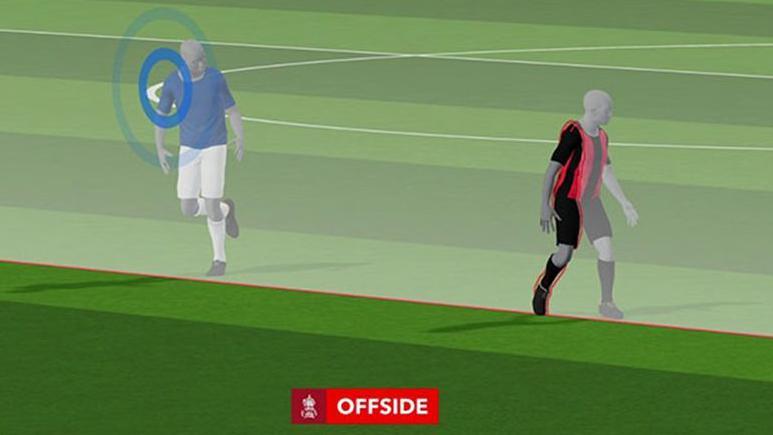What are semi-automated offsides?

A 3D animation such as this one will be played on television and on big screens in stadiums
- Published
Semi-automated offside technology is about to be implemented in English football.
Having been delayed from its original planned introduction date in autumn, the system will now be adopted during this weekend's FA Cup fifth round.
The technology was first used in elite-level football at the 2022 World Cup in Qatar, and has since been used in leagues including Serie A and La Liga, as well as the Champions League.
It is designed to make the judgement of tight offside calls easier for officials by rendering key parts of the process automatic.
So how exactly does it work?
Semi-automated offside technology explained
The system aims to remove some elements of human subjectivity by replacing decisions made by officials with automated ones taken by technology.
As things stand, when a player scores after a borderline offside situation, officials in the video assistant referee (VAR) room must decide on three key things - when the ball was kicked, where and at what angle the defender's body was when the ball was kicked, and where and what angle the attacker's body was.
All three of those decisions will now be automatically taken by the technology.
Bespoke cameras will monitor a variety of key elements involved in any tight offside decision have been installed beneath the roof at all 20 Premier League stadiums.
The cameras will track the exact movement of the ball as well as 10,000 surface mesh data points on the bodies of all 22 players, meaning it can be automatically determined whether or not an attacking player's body was beyond the last defender's at the exact time the ball was played.
Artificial intelligence manages the process, monitoring ball and player movement, before coming up with a decision as to whether the player was onside or offside.
VAR officials check the system has correctly determined the three key points it measures before confirming the decision. The on-field officials then inform the players.
A 3D animation of the decision produced by the artificial intelligence will then be played on television for viewers at home and on big screens in the stadium.

Cameras are positioned as per the above diagram
What will change for fans?
In theory, the introduction of semi-automated offsides should mean shorter waits for decisions about whether or not a goal was offside, as automating the subjective, fiddly decisions officials used to make should be quicker.
But there will still be subjective decision-making involved in offside calls. The technology cannot determine if an attacking player was interfering with play, for example, or if a goalkeeper's vision was blocked.
Play will still be allowed to continue by assistant referees after narrow offside calls, as has been the case since VAR was introduced in the Premier League in 2019, meaning delayed flags won't be coming to an end.